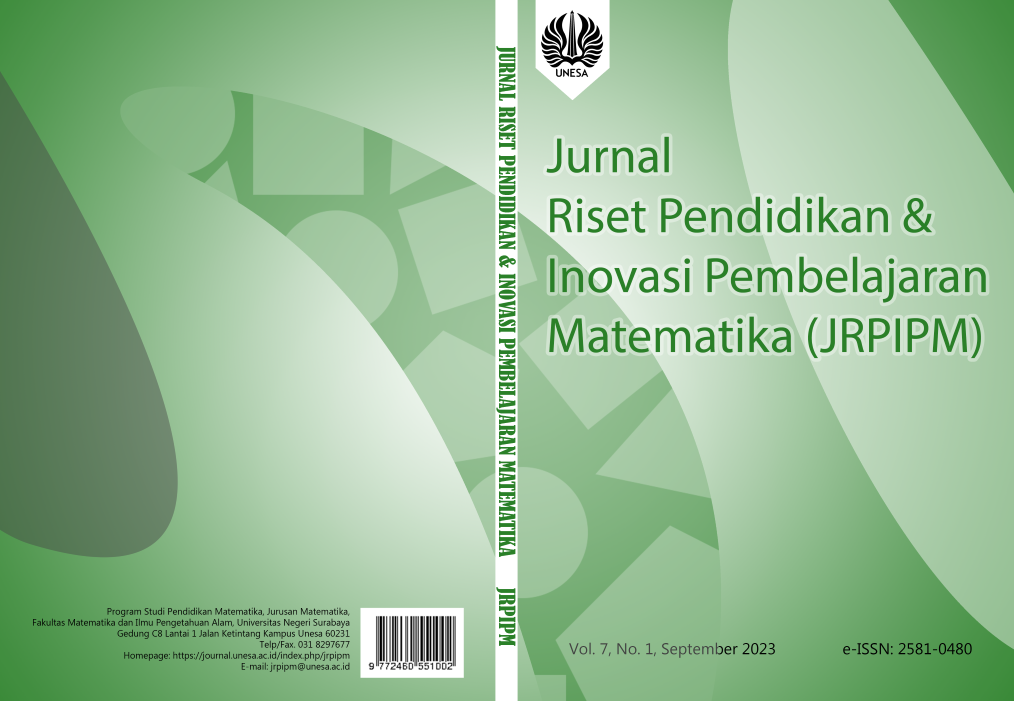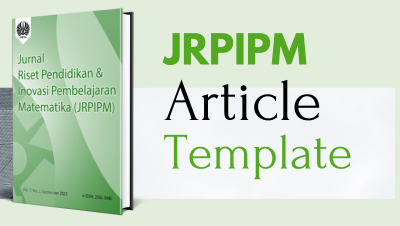The Exploration of Geometrical Concept in Batik Pamekasan
DOI:
https://doi.org/10.26740/jrpipm.v7n1.p38-50Keywords:
Ethnomathematics, Geometrical Concept , Batik PamekasanAbstract
Indirectly, mathematical themes can be found throughout Indonesia's unique culture, one of which is mathematics in batik cultural items. Exploring ethnomathematics will be really beneficial. Apart from acquiring the concept of mathematics in Indonesian culture, it can also sharpen Indonesian culture's sense of love for the nation. The purpose of this study is to describe the philosophical meaning of the geometrical concepts contained in Pamekasan batik, the geometrical concepts contained in Pamekasan batik, and the implementation of Batik pamekasan as the context in learning geometry. This is ethnomathematics study which gather the data by observation and interview. The interview held two regions in Pamekasan with four informants. As a result, scholars aim to conduct an ethnomathematics examination of traditional Pamekasan batik. This research shows that aside from the Batik itself, the mathematical objects found in Batik each have their own meaning and hopes. As a result, mathematical motifs such as the point that depicts a rice or maize seed have philosophical significance. Meanwhile, reflection reveals that human life requires balance. Each mathematical object in the pattern has its own meaning. Meanwhile, geometrical objects in Batik Pamekasan are two-dimensional figures such as circles, rectangles, squares, lines, points, angles, and curves. In addition, transformative geometry like as rotation, reflection, and translation exist in Batik Pamekasan. Besides, batik pamekasan can be used as the context in learning geometry. This can be seen from the learning outcomes that was written in Merdeka curriculum. Moreover, problem-based learning and project-based learning are two models that support ethnomathematics-based learning.References
Zaenuri (2020). Etnomathematics of batik motifs in problem based learning. Journal of Physics: Conference Series, 1567(3), ISSN 1742-6588, https://doi.org/10.1088/1742-6596/1567/3/032013
Pramudita, K. (2019). Exploration of Javanese culture ethnomathematics based on geometry perspective. Journal of Physics: Conference Series, 1200(1), ISSN 1742-6588, https://doi.org/10.1088/1742-6596/1200/1/012002
Rosa, M. (2017). Ethnomodelling as the Mathematization of Cultural Practices. International Perspectives on the Teaching and Learning of Mathematical Modelling, 153-162, ISSN 2211-4920, https://doi.org/10.1007/978-3-319-62968-1_13
Albanese, V. (2020). Mathematics conceptions by teachers from an ethnomathematical perspective. Bolema - Mathematics Education Bulletin, 34(66), 1-21, ISSN 0103-636X, https://doi.org/10.1590/1980-4415v34n66a01
Verner, I. (2019). Development of competencies for teaching geometry through an ethnomathematical approach. Journal of Mathematical Behavior, 56, ISSN 0732-3123, https://doi.org/10.1016/j.jmathb.2019.05.002
Herawaty, D. (2019). Improving student's understanding of mathematics through ethnomathematics. Journal of Physics: Conference Series, 1318(1), ISSN 1742-6588, https://doi.org/10.1088/1742-6596/1318/1/012080
Maryati (2019). Ethnomathematics: Exploring the activities of culture festival. Journal of Physics: Conference Series, 1188(1), ISSN 1742-6588, https://doi.org/10.1088/1742-6596/1188/1/012024
Mania, S. (2021). Teachers' perception toward the use of ethnomathematics approach in teaching math. International Journal of Education in Mathematics, Science and Technology, 9(2), 282-298, ISSN 2147-611X, https://doi.org/10.46328/IJEMST.1551
Miles & Huberman Saldana, Qualitative Data Analysis. America: SAGE Publications, 2014.
Hendriyanto, A. (2021). Geometric Thinking Ability for Prospective Mathematics Teachers in Solving Ethnomathematics Problem. IOP Conference Series: Earth and Environmental Science, 1808(1), ISSN 1755-1307, https://doi.org/10.1088/1742-6596/1808/1/012040
Prahmana, R.C.I. (2020). Learning geometry and values from patterns: Ethnomathematics on the batik patterns of yogyakarta, indonesia. Journal on Mathematics Education, 11(3), 439-456, ISSN 2087-8885, https://doi.org/10.22342/jme.11.3.12949.439-456
Downloads
Published
How to Cite
Issue
Section
 Abstract views: 4412
,
Abstract views: 4412
, PDF Downloads: 289
PDF Downloads: 289







